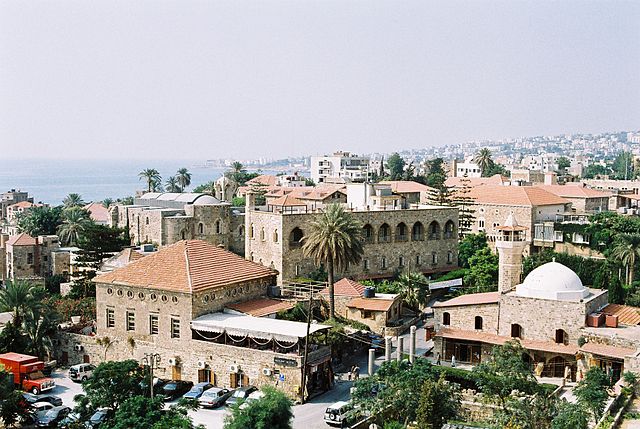Byblos, also known as Jebeil, Jbeil or Jubayl, is an ancient city in the Keserwan-Jbeil Governorate of Lebanon. The area is believed to have been first settled between 8800 and 7000 BC and continuously inhabited since 5000 BC. During its history, Byblos was part of numerous cultures including Egyptian, Phoenician, Assyrian, Persian, Hellenistic, Roman, Genoese, Mamluk and Ottoman. Urbanisation is thought to have begun during the third millennium BC and it developed into a city making it one of the oldest cities in the world. It is a UNESCO World Heritage Site.
Byblos Old Town
Terracotta jug from Byblos (now in the Louvre), Late Bronze Age (1600–1200 BC)
Dark faced burnished ware pottery from Shir, in Syria
Byblos
Phoenicia, or Phœnicia, was an ancient Semitic thalassocratic civilization originating in the coastal strip of the Levant region of the eastern Mediterranean, primarily located in modern Lebanon. The territory of the Phoenicians expanded and contracted throughout history, with the core of their culture stretching from Arwad in modern Syria to Mount Carmel in modern Israel covering the entire coast of modern Lebanon. Beyond their homeland, the Phoenicians extended through trade and colonization throughout the Mediterranean, from Cyprus to the Iberian Peninsula.
Two bronze fragments from an Assyrian palace gate depicting the collection of tribute from the Phoenician cities of Tyre and Sidon (859–824 BC). British Museum.
Phoenicians build pontoon bridges for Xerxes I of Persia during the second Persian invasion of Greece in 480 BC (1915 drawing by A. C. Weatherstone).
Achaemenid-era coin of Abdashtart I of Sidon, who is seen at the back of the chariot, behind the Persian King.
A naval action during Alexander the Great's Siege of Tyre (332 BC). Drawing by André Castaigne, 1888–89.








